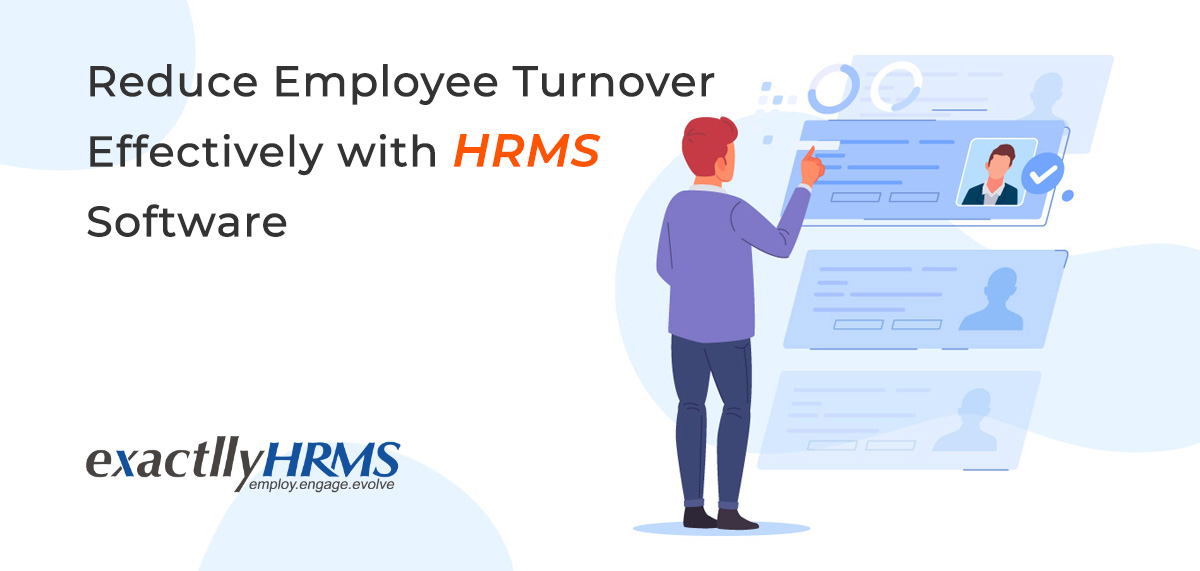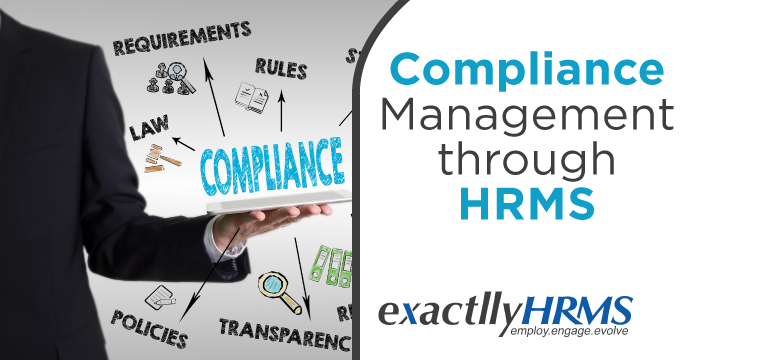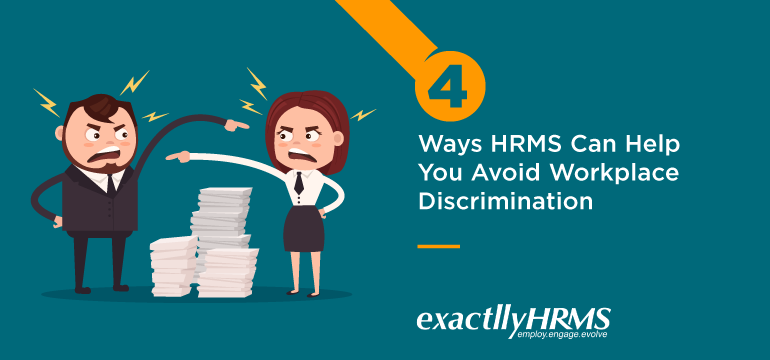Reduce Employee Turnover Effectively With HRMS Software

Most business leaders believe employee retention to be a crucial business requirement. On the other hand, the HR department faces a significant challenge almost every day: employee churn management. The high amount of employee turnover results in a completely new stage of recruitment that is not only a pricey endeavour but also time-consuming. No company wants to learn employee turnover meaning and employee attrition meaning as it can mean a loss in various ways. The total cycle of lost productivity, recruitment, training and severance can cost an organization anywhere between 95% to 200% of the previous annual salary of the employee. This makes it crucial to reduce employee turnover. Not only this, but staff turnover can also impact the morale and motivation of the remaining employees. However, preventing 76% of voluntary and dysfunctional turnover is very much possible. It is an outcome of an amalgamation of numerous push factors such as the absence of career development prospects, unpleasant work environment, mismatch of skill-set and job requisites, poor work-life balance, and a lot more. But implementing HRMS software can change the entire game for organizations of today’s time. These systems help streamline all activities related to human resource management and can essentially help decrease employee turnover. A boost to the ROI and automation of administrative tasks are the biggest benefits of this software. How an HRMS facilitates steadfastness in HR management practices and employee retention in HRM is what we will learn here. Stay tuned.
Reduce Employee Turnover with Tried & Tested Tips:
Human resource management software is an unmatchable integrated system as companies can get any other best payroll software for small businesses other than this. An organization can quickly expand its horizons with HRMS integration as the HRMS features list benefits both employees and HR staff that ultimately boosts productivity. If you want to deploy the best HRMS software in Kolkata, then look no further than Exactlly as their software products are one in a million that lets companies scale and keep on expanding. If you want to reduce employee turnover for your organization, take a look at the steps that show how you can benefit from HRMS software:
- Boost Employee Engagement – As per numerous studies performed in the sphere of HR management, it is seen that 88% of an organization’s employee churn is because of a less engaged or demotivated workforce. Hence the primary step is to boost staff attrition by enhancing engagement within the workforce. Any company can ensure long workforce retention within the workplace with a first-rate HRMS system.
Several aspects are connected with the workforce, such as employee attendance systems and attendance management. HRMS software works by streamlining all these aspects. Even before a new employee undergoes the joining process, HRMS systems help recruiters to schedule the onboarding requirements. With the help of HRMS, not just employee turnover but the HR staff can also automate tasks as employees can now sign electronically on the administrative documents. With a few clicks, employees can also get to know about the latest news and objectives of the organization and access the newsletter to learn about the new workplace in a better way. Automatically employee boredom and demotivation can be eradicated as the system instantly engages them.
Moreover, HRMS systems take the approach of continual education to improve retention. Employees can always benefit from better development and training, and they see it as a catalyst for growth. Employees who receive practical training will always refrain from quitting their present position within an organization. Engaged employees automatically perform better and nurture the capacity to exhibit nothing but strength.
- Tracking Employee goals, Performance, and Recognition – Not always employee turnover is categorized as poor practice. But when you catch your employees underperforming and not fulfilling company expectations, you need to focus on employee retention in HRM. However, with so much already on the plate, it is very challenging for the HR department to measure or monitor the performance of the workforce. But with HRMS software, monitoring becomes a breeze. Companies with these high-end systems can assign goals, track progress, consider the skill sets, and a lot more. The performance data is advantageous to both managers and employees.
The workforce can constantly measure their progress and ask for assistance from the HR staff to enhance the organization’s well-being. This will also help in setting future goals. On the other hand, managers can evaluate the workforce in a quantifiable manner and offer them relevant feedback and recognize their achievements.
To be precise, HRMS helps reduce employee turnover rate by offering the employee the right quantity of work depending on the skill set. The systems also measure the same by providing relevant feedback. This results in employee satisfaction, which leads to long-term benefits for the organization.
- Evaluate the Turnover Rate & Returns – An organization must know the exact staff turnover rate it is dealing with. It is an important task, and organizations can do this conveniently with the help of HRMS software. The human resource department performs exit interviews when an employee stops working for a company. This is done for the purpose of comprehending the reasons that compelled the individual to take that decision. The beauty of HRMS software is that it comes with an all-inclusive feedback system that helps the HR department to realize the factors causing and resulting in employee disappointment and discontentment. The system will also help the organization in determining the employees planning to quit soon.
Addressing most of the factors easily is now possible with effective HRMS software. The software is instrumental in comprehending the key catalysts of employee turnover. It also presents strategies to the organizations to reduce employee turnover, which is the most noteworthy feature of these systems.
- Monitoring Long-standing Employees – It is imperative to leverage HRMS to perform employee satisfaction feedback sessions and surveys. When it is conducted with senior employees, it can assist in identifying the key factors that drive their contentment. It will be then possible to prioritize the modifications that are crucial for the benefit of the workforce. An organization can reduce employee turnover largely with this information.
- The Hiring Process in Sync with Business Forecasting – Organizations while advancing for expansion sometimes neglect the growth within the workforce. It is vital for accommodating fresh business requisites. HRMS software can help manage staff turnover as it is integrated with effective forecasting systems and business processes that assists executives in comprehending the number of needed hires and foresee how the linked costs of training and onboarding will match with the annual budget. HR with these forecasts can approach calculative towards recruitment and guarantee the employee attrition remains low.
- Recruiting the Right People – Recruiting is very important if an organization wants to keep employee turnover on the lower front. The HR staff that is appointed for recruiting must be clear regarding the culture of the organization upfront. The candidate must know from before the way the company operates. However, the most important portion of hiring is that a company seeks the right person right from the beginning. The job description must reflect job responsibilities so that the candidates know what is expected out of them.
- Coping with the Market Rate and Extending Competitive Salaries – People mainly take up jobs and show up at work because of benefits and pay. But this reason can compel experts to change jobs as well. No wonder the higher remunerations are more favourable for employees followed by benefits and time off. Every organization must provide an appropriate salary that will always attract talented and qualified candidates.
- Monitoring Toxic Employees Closely – There are toxic co-workers found in almost all organizations who are a bit more critical and they engage in undermining colleagues and gossiping. These are the kinds of people who can push the best employees out of the company. But when every member within a workforce can trust each other and the leaders it can have a good effect on employee management, work quality and a lot more. The link between turnover and relationships is direct. So by focusing on this organizations can reduce employee turnover easily.
- Recognizing Employees – Simple gestures of appreciation and thank you notes either written or spoken can keep the workforce motivated. When staff members are offered opportunities they feel more recognized that largely helps companies manage employee turnover. Receiving recognition will make employees stay longer.
Final Say:
Organizations that desperately want to reduce employee turnover are surely unaware of the HRMS software features. Employee turnover is the biggest reason why several organizations are currently bearing losses months after months. HRMS manages staff turnover as it streamlines the total life cycle of the employees that helps it maintain satisfaction within the employees in all the stages. Employee churn essentially decreases with HRMS as employees who regularly work in a happy and positive workplace never consider quitting. They, in turn, put in the extra effort with dedication towards the well-being of the organization. HRMS software can change employee turnover and employee attrition meaning for an organization. The problem of dysfunctional turnover can be better combatted when the employees know how much the organization values them. Stakeholders can any day understand the workforce better by reverting to employee retention in HRM. No matter how varied your business goals are, along with various limitations, the best HRMS software in Kolkata, like exactllyHRMS, helps organizations gel along with the employees excellently. Learn more about the product in the Free Demo. Contact Us today.
FAQ:
(1) How can staff turnover be controlled?
Recruiting the right people, encouraging gratitude and generosity, focusing on engagement and offering flexibility are some ways to control staff turnover.
(2) What helps reduce employee turnover and absenteeism?
Embracing flexible schedules, enforcing an attendance policy and offering career development prospects are some ways to reduce employee turnover and absenteeism.
(3) Why is it important to reduce employee turnover?
It is important to reduce employee turnover as it can cost a business double an employee’s remuneration to hire & train a replacement.
(4) What is lower turnover?
Low turnover is when a company is equipped with a workforce that is engaged and motivated and who work within a healthy environment.
(5) How can employee turnover be improved?
One of the best ways of improving employee turnover is by offering employees a sense of meaning and purpose in their work. The workforce must be able to work with a strong vision.
(6) What does reducing turnover mean?
Reducing turnover means addressing the challenges that each employee is going through professionally and immediately. It is the duty of every organization.
(7) How does low employee turnover affect a company?
Low employee turnover can help organizations in saving money by preventing the occurrence of unnecessary mistakes. It will also have a positive impact on the payroll as there will be no need to give training to new workers.
(8) How do you retain staff in a high turnover culture?
An organization’s culture is generated through experiences that an employee has with his managers, executives and peers. When an organization maintains a positive employee experience, then it is the best retention strategy.
(9) How do you retain an employee who wants to leave?
Talking it out, offering support, investing in employee retention, showing appreciation are some of the ways to retain an employee who wishes to quit,
(10) What are retention strategies?
Retention strategies are plans and policies that organizations need to follow for decreasing employee attrition and turnover and guarantee that employees are productive and engaged long-term.
(11) How do you motivate your employees?
Sharing positive reviews, offering flexible scheduling, making the business place a pleasant environment, giving employees room for growth are some of the ways to motivate employees.
(12) How can HRM reduce employee turnover?
HRM reduces employee turnover by guaranteeing that the hiring process is in sync with the business forecasting, monitoring long-standing employees, finding the correct candidate, striking work-life balance and a lot more.






